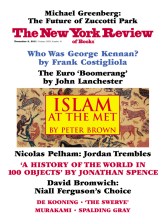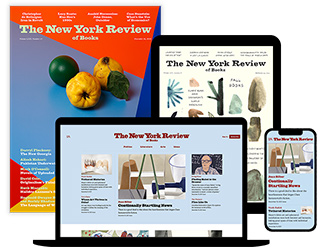Simon Wiesenthal’s legend is well known: the survivor of a succession of concentration camps, he was the Nazi hunter who tracked down Adolf Eichmann and brought to justice such monsters as Franz Stangl, the commandant of Treblinka, the most murderous of death camps, and Hermine Braunsteiner, the whip-wielding “Mare of Majdanek.” He was received by presidents at the White House, and had among his more surprising friends in high places German Chancellor Helmut Kohl and, once he had been released from Spandau prison, Albert Speer.
Countless honors were bestowed on him, among them the first honorary degree granted a Jew by the Jagellonian University in Kraków in its 610 years, the US Congressional Gold Medal, and the Golden Cross of Honor that the president of Austria brought to Wiesenthal’s bedside when he was nearing death. A prolific author of autobiographical texts
Practically everything known about Wiesenthal up to May 5, 1945, when American troops liberated the Mauthausen concentration camp in Austria, where he was a prisoner, is based on what he said in his books and countless articles, speeches, and interviews.
Wiesenthal was born on December 31, 1908, in Buczacz, Galicia, a very small town southeast of the city then called Lemberg. Lemberg became Lwów at the end of World War I, as a Polish city. It is now Ukrainian Lviv. There was no lack of Jews to exterminate in Galicia. Before World War I, some 870,000 Jews lived there, about 20 percent of the population. Buczacz, birthplace of the Hebrew writer S.Y. Agnon as well, had a population of nine thousand, of whom six thousand were Jews,
Called up as a reservist, Wiesenthal’s father was killed in action in 1915. As the Austrian front crumbled in the east, the advance of Russian troops—and the prospect of pogroms that would attend their arrival—frightened Galician Jews, especially those who lived in small towns like Buczacz. Wiesenthal’s family fled first to Lwów and then to Vienna, where they lived in Leopoldstadt, the heavily Jewish lower-class district. As soon as the war ended, Wiesenthal’s mother decided it was safe to return to Buczacz. At the school he attended in Vienna the classes were in German. Back in Buczacz, he learned or relearned Polish and went to a Polish secondary school where he met Cyla, the girl he was to marry.
-
1
See Ich jagte Eichmann (Gütersloh: Bertelsmann Lesering, 1961); The Murderers Among Us: The Simon Wiesenthal Memoirs, edited by Joseph Wechsberg (McGraw-Hill, 1967); and Justice, Not Vengeance, translated by Ewald Osers (Grove Weidenfeld, 1989). ↩
-
2
See Eli M. Rosenbaum and William Hoffer, Betrayal: The Untold Story of the Kurt Waldheim Investigation and Cover-Up (St. Martin’s, 1993). ↩
-
3
Sources of information behind the Iron Curtain were as a practical matter unavailable, and the memories of witnesses who had survived the war were not necessarily more reliable than his. ↩
-
4
Wiesenthal, The Murderers Among Us, p. 24. ↩
-
5
Hella Pick, Simon Wiesenthal: A Life in Search of Justice (London: Weidenfeld and Nicolson, 1996), p. 29. ↩
-
6
Pick, Simon Wiesenthal, p. 30. ↩
-
7
Pick, Simon Wiesenthal, p. 30. ↩
-
8
Pick, Simon Wiesenthal, pp. 120–121. ↩
-
9
Hannah Arendt, Eichmann in Jerusalem, A Report on the Banality of Evil (Penguin, 2006), p. 238. ↩
-
10
Arendt, Eichmann in Jerusalem, pp. 14–15. ↩
-
11
Pick, Simon Wiesenthal, pp. 246–272. ↩
-
12
Pick, Simon Wiesenthal, pp. 241–254, 272–291. ↩
-
13
According to The New York Times, Singer was fired from the organization in March 2007 after a three-year controversy concerning his “lavish travel and other expenses” and “odd transfers” of $1.2 million between accounts in New York, Switzerland, and London. An investigation by the New York attorney general’s office concluded that Singer had violated his fiduciary responsibilities. See Stephanie Strom, “World Jewish Congress Dismisses Leader,” The New York Times, March 16, 2007. See also an earlier report by Amiram Barkat, “Israel Singer Fired from WJC for Allegedly Embezzling Funds,” Haaretz, March 22, 2007. ↩
-
14
Rosenbaum, Betrayal, p. 1. ↩
-
15
Pick, Simon Wiesenthal, p. 304. ↩
-
16
Pick, Simon Wiesenthal, p. 373. ↩
-
17
Simon Wiesenthal, The Sunflower: On the Possibilities and Limits of Forgiveness (Schocken, 1997), originally published as Die Sonnenblume (Paris: Opera Mundi, 1969). ↩





